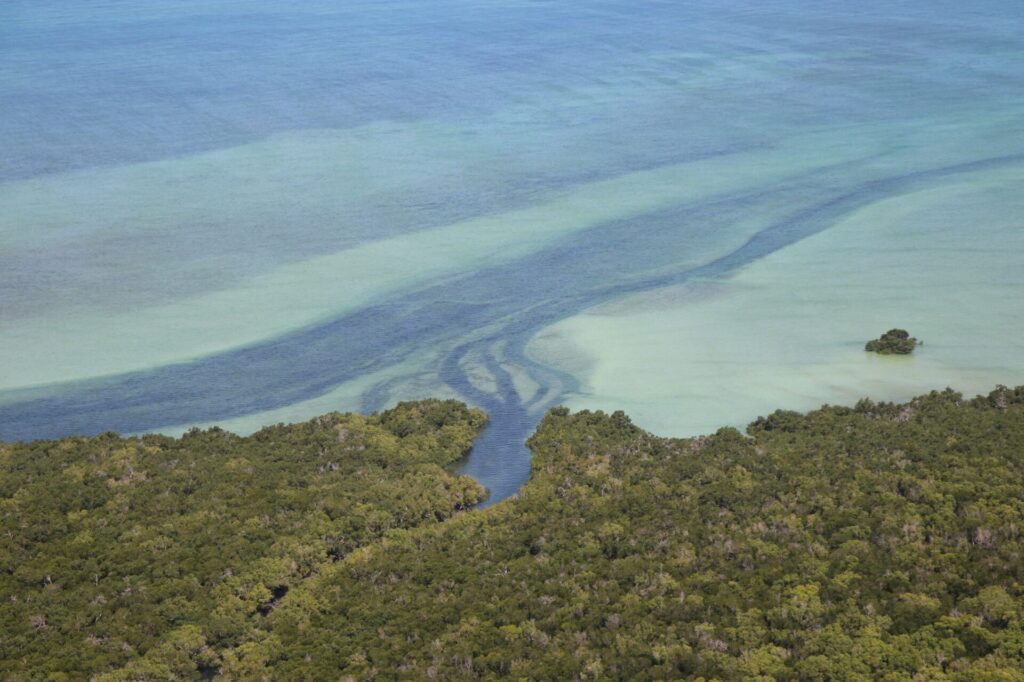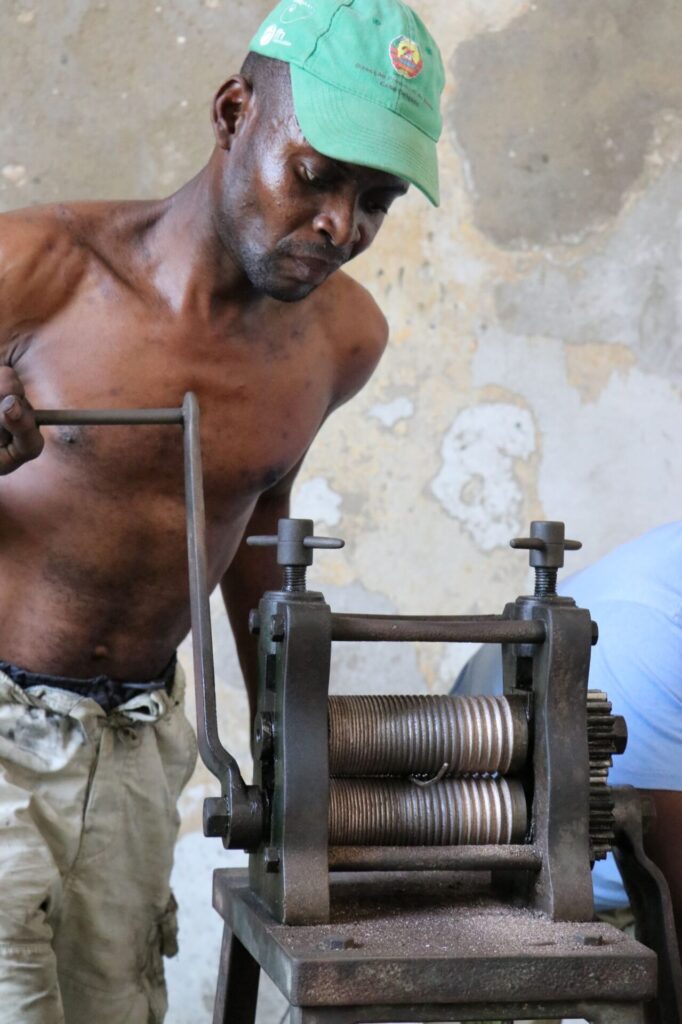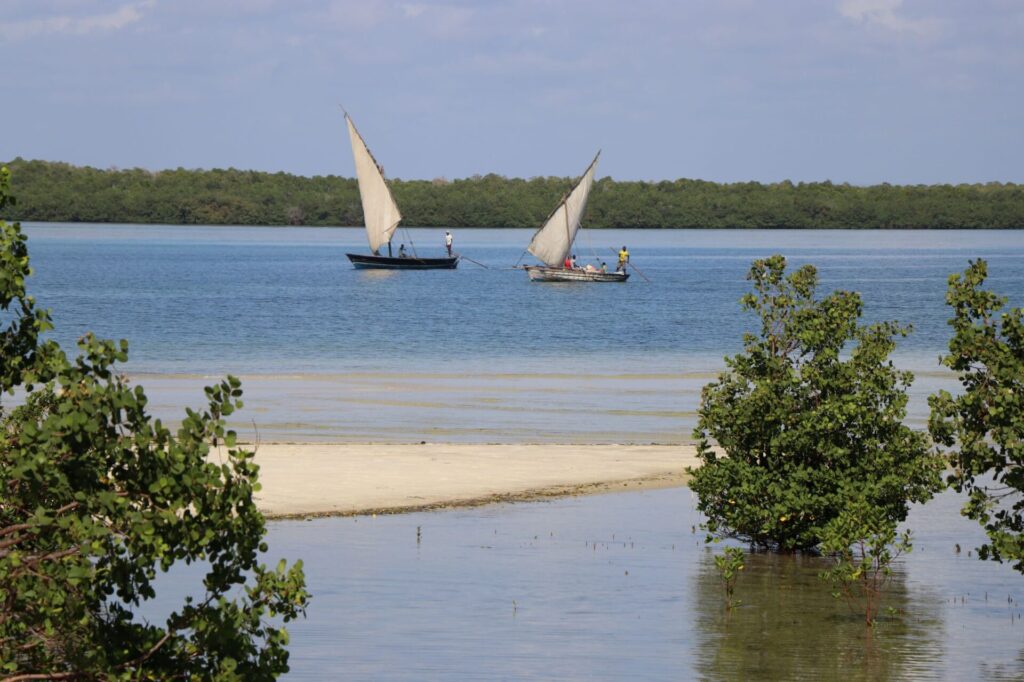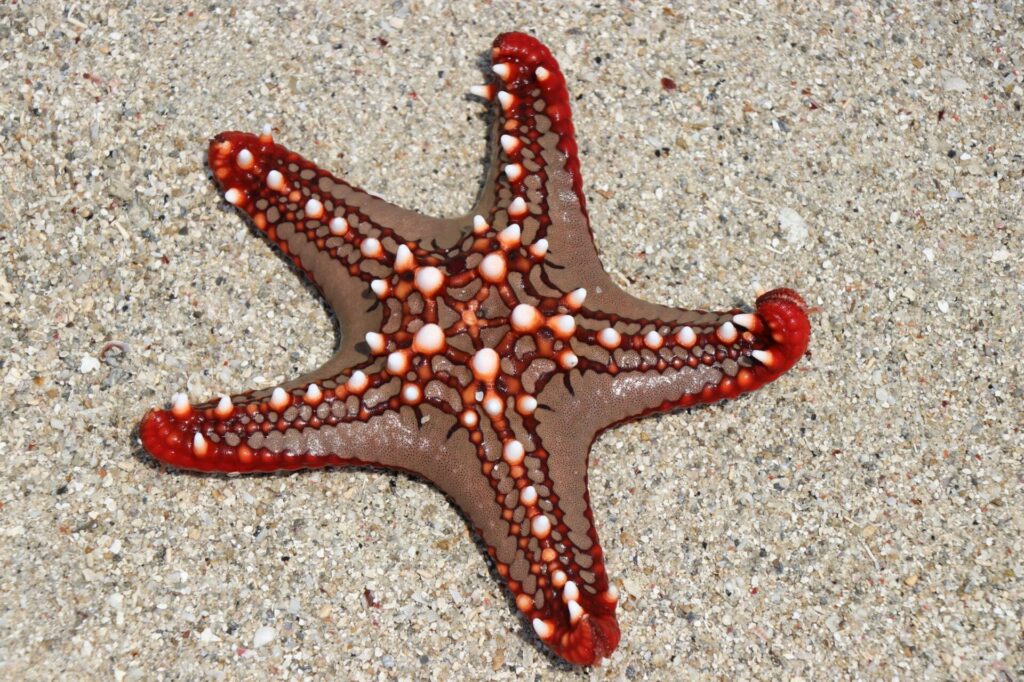The Quirimbas National Park (QNP) in Mozambique has some of the greatest coastal and marine biodiversity in the region and is one of the country’s largest and most important protected areas. In and around designated conservation areas such as the QNP, livelihood-focused interventions that simultaneously aim to reduce the prevalence of environmentally damaging activities and manage and enforce biodiversity protection, while providing the local communities with equivalent income opportunities, are essential.
Coastal livelihood interventions can help communities by providing additional incomes, while protecting and maintaining resources and the environment.
However, over the years there have been significant investments in alternative livelihoods strategies in and around key biodiversity areas, targeted at those communities reliant on fishing, hunting and non-timber forest product harvesting. Yet very little is known about what has worked, what has not worked, and why. Critics believe that alternative livelihoods projects do not protect, maintain or even improve biodiversity objectives as they are intended to.

The park
The QNP is located in Cabo Delgado Province in northern Mozambique and protects approximately 7500km² of terrestrial and marine habitat. There are 11 islands in the marine component of the QNP, covering a coastal stretch of approximately 100km. Based on its size and the presence of important species, habitats, ecosystems and landscapes, this park plays a key role in the conservation of local, regional and global biological diversity, particularly given its position within the broader East African Marine Ecoregion, which includes neighbouring Kenya and Tanzania. In July 2018, UNESCO added the QNP to its World Network of Biosphere Reserves. This is Mozambique’s first Biosphere Reserve.
Management
The decree establishing the QNP, together with the park’s current management plan and Mozambican law on protected areas, gives the park considerable legal and administrative protection. However, the QNP, like many others of its nature, faces substantial challenges in the practical application and implementation of these policies, planning and legislative frameworks. There are considerable constraints around balancing the multiple objectives of protected area management, the enforcement of sustainable resource extraction and local development considerations, particularly with the growing demands of the 170 000 people who reside within the park’s boundaries and the adjoining buffer zone.
Other challenges also include a growing demand for building materials (such as mangrove poles and coral for lime) and agricultural land, which contributes to habitat destruction. There are also major challenges related to the use of destructive fishing gear; the illegal harvesting and trade of crabs, molluscs and other valuable seafood; and the presence of migrant fishers in the park, causing conflict with local fishers over access to fishing grounds and overexploitation of marine resources.
Livelihood strategies
Aside from agricultural activities, coastal communities in the QNP are largely dependent on the use of marine and coastal resources, with few livelihood options to supplement their income and subsistence. Seafood products often provide a cash income, while agriculture predominantly plays a subsistence role. To a lesser extent, people also derive income from other informal activities such as lime production, boat construction, carpentry, mat making, tailoring, etc.

Research undertaken in the area illustrates that each island in the QNP has specific livelihood characteristics. Livelihoods on the largest island, Quirimba, are supported by the small-scale production of and trade in coconuts, while Ibo Island is an accessible and attractive tourism destination. Subsistence agriculture takes place on both Ibo and Quirimba, while Matemo Island has limited fresh water, lacks fertile soil for agriculture and sees relatively low levels of investment.

There is also often a gender difference related to livelihood alternatives. Female fishers on Ibo, Quirimba and Matemo, for example, generate a diversified income from octopus harvesting, oyster and pen shell gleaning, and small-scale agriculture. These women prize numerous income streams and look for means to enhance their livelihood activities, such as through trading octopus and fish to Pemba mainland. Women in these communities also expressed the wish to start local village tourism projects (such as overnight visits to their homes), but this will require significant financial investment and hospitality training.

Men on these islands, on the other hand, would like to enhance their line, net and trap fishing techniques in response to reduced fish catches. This includes the use of sailboats or dhows (as opposed to canoes) to explore deeper waters in search of pelagic fish of higher commercial value.

Failed attempts
Despite the numerous livelihood projects implemented since the Park’s establishment in 2002, little is known about their effectiveness in contributing to both biodiversity conservation in the park and socio-economic improvements. This is largely because of the lack of comparative data, monitoring of projects and baseline studies.
Despite considerable investment, about a third of the livelihood interventions in the QNP have stopped prematurely or failed to achieve their intended outcomes. Some reasons cited include the lack of a sustainability or exit strategy, and subsequent dependence on the continued involvement of a single investor or nongovernmental organisation (NGO) for resources such as building materials and technical support. Some projects did not adequately account for constraints related to market dynamics such as market linkages, seasonal demand for products, and inconsistent prices for fish. Other projects required additional technical skills that were not readily available in the community.
Learning from these failed attempts, as well as from other global livelihoods examples, there are numerous interventions that can be put in place to help support the achievement of more resilient coastal livelihoods within the QNP.

Four recommendations
1. Provide suitable access to financing for all groups wishing to start a new activity.
In the case of the QNP, particular consideration must be given to the Village Savings and Loans Association (VSLA) approach that is currently being implemented on Matemo Island by environmental NGO Associação do Meio Ambiente (AMA). By offering cost-effective credit and savings products (members make savings contributions to the pool and can also borrow from it through interest free loans or cash grants), VSLAs can play a critical role in bringing financial services to rural areas where access to formal financial services is limited. This can improve financial inclusion, household business outcomes, women’s empowerment and livelihood resilience.
2. Piloting new techniques and approaches for more sustainable resource use
In April 2017 two sites in the QNP were selected for temporary closure (seven months) to allow the octopus fishery time to replenish, as well as to grow to a reasonable size for sale (octopus is a fast-growing species). This move was initiated by the fisheries communities themselves, in collaboration with local government, park authorities, the WWF and the tourism sector. Besides benefiting octopus fishery, this strategy also has positive spin-offs for other species, and it is hoped that they will act as a catalyst for more permanent closures and no-take zones.
The NGO community has also for some time been working with fishing communities to develop gated fish traps to improve catch selectivity. While fishers are receptive to this mechanism, there is a collective use problem in that all fishers must utilise it in order to alleviate fishing pressure. It is therefore essential that the QNP management authorities regulate trap fishing in the area.

3. Strengthening community-based organisations
Community-based organisations (CBOs) with technical, organisational and institutional capacity are better able to assume management responsibilities and enhance partnerships with public and private sector actors.
In this regard, CBOs in the QNP have benefited from their collaboration with key role players in the area. For example, the WWF, QNP and Blue Ventures are implementing sanctuaries and temporary fishery closures with community organisations; government departments (such as the Provincial Directorate of the Sea, Inland Waters and Fisheries) have undertaken capacity-building activities of CBOs focused on improving market access, while the National Institute for the Development of Small-Scale Fisheries has supported the establishment of a fish purchase and trade centre.
NGOs, private sector foundations (such as the Ibo Foundation and Oikos) and private hotel operators (Ibo Island Lodge, Miti Miwiri, Villa Azura and others), are also well placed to support the development of community tourism projects with conservation objectives.
4. Implementation and enforcement of marine management measures by community members and community fisheries councils (CCPs)
CCPs have been set up to support the government in the co-management of designated fisheries areas. Fisheries communities may view conservation interventions and restrictions on access to former fishing grounds as a threat to their livelihoods, rather than mechanisms to support them. It is therefore important to actively engage CCPs in conservation planning and activities, such as jointly patrolling no-take zones and establishing temporary octopus closures.
As such, CCPs offer real value to park officials as they are on the ground and able to monitor the area through local knowledge. However, CCPs need financial compensation for these activities.
Getting it right
The management and conservation of biodiversity should be at the core of any livelihood strategy in the QNP. However, it is also equally important that interventions contribute to livelihood enhancement, sustainable biodiversity management and climate resilience.
While there are many feasible livelihood options for the QNP, past lessons can help policymakers and project investors to fully understand the livelihood characteristics of particular locations, and implement projects that eliminate the main drivers of unsustainable resource extraction. A prerequisite for their success is the degree to which fisheries communities are actively involved in the process of biodiversity conservation, monitoring and law enforcement.
Download the full policy brief by the South African Institute for International Affairs here.
All images by Romy Chevallier.
The opinions expressed in this article are those of the author(s) and do not necessarily reflect the views of SAIIA or CIGI.
